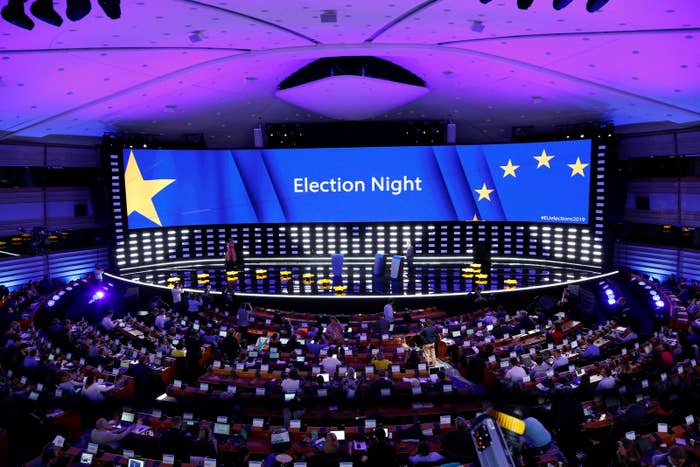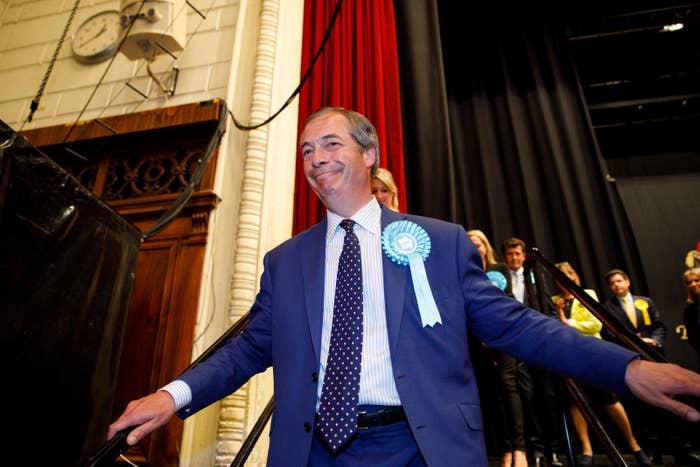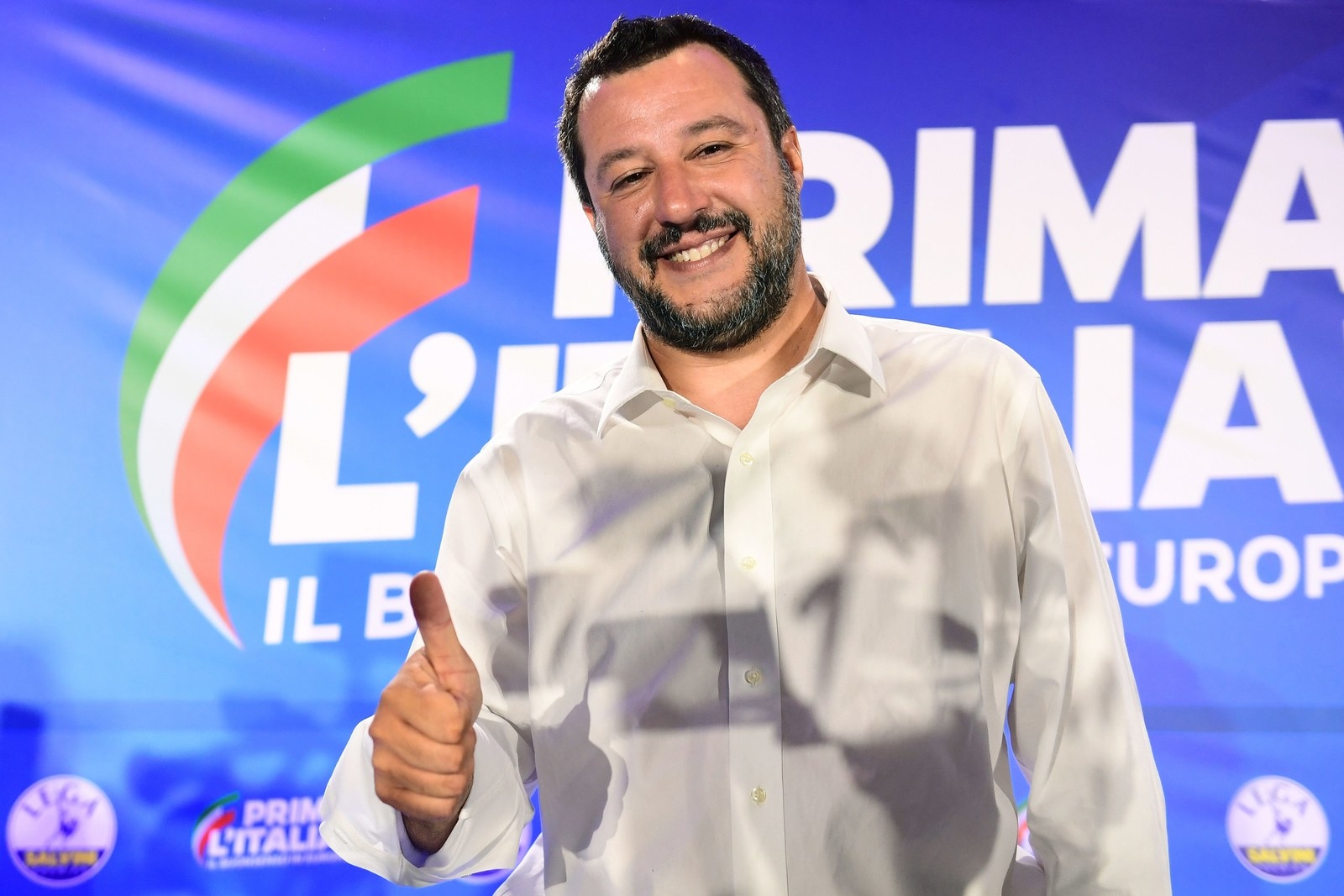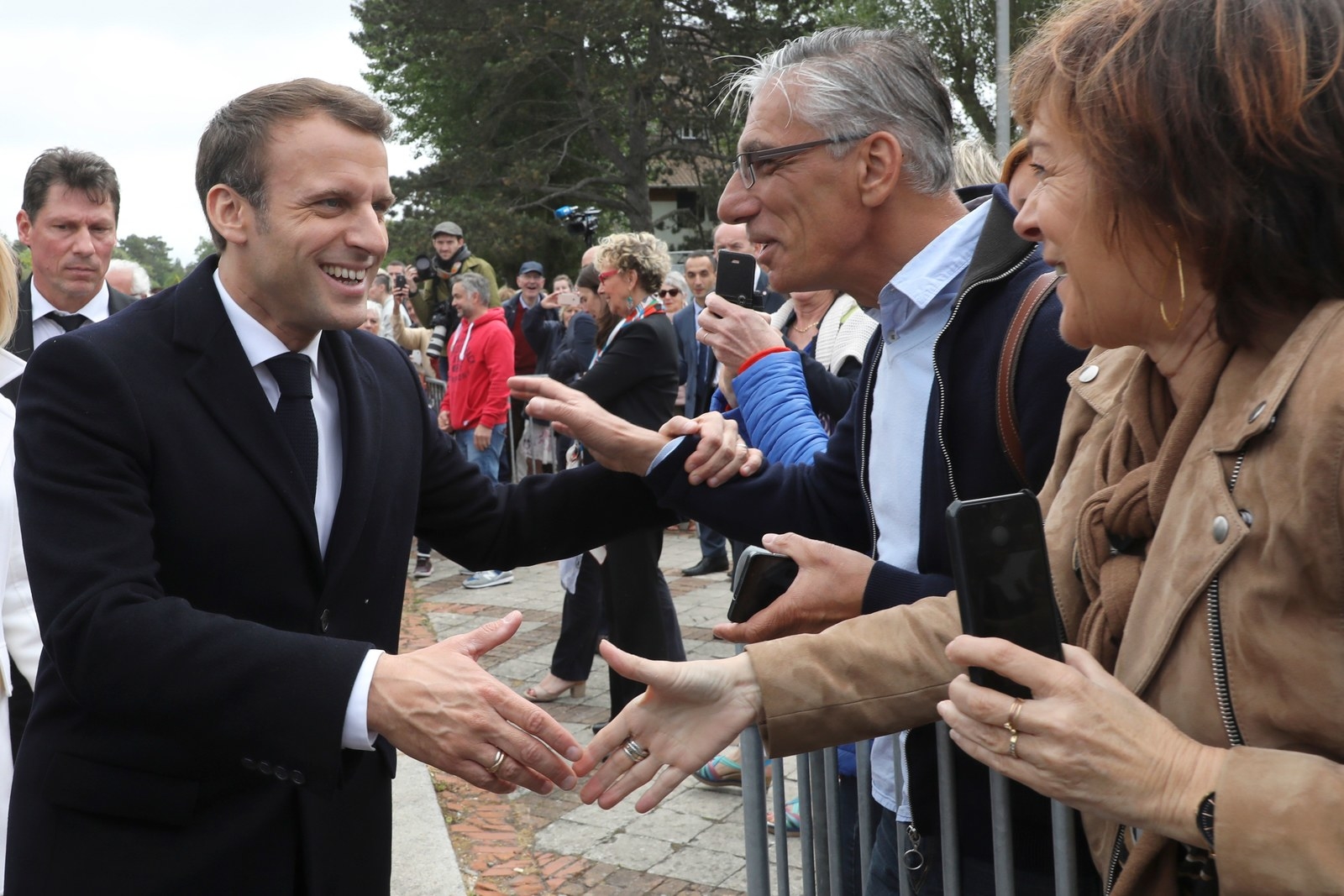
The good news as far as the European Union will be concerned is that the new European Parliament is overwhelmingly pro-EU.
The more complicated news is that the Parliament has emerged more fragmented and polarised after an election that saw turnout surge across much of the continent to its highest level in more than 20 years.
The Parliament will be more liberal, more Green, and more nationalist than it previously was — and it will still have 73 British members. Well, for now, at least.
Voting in the 28 member states is never exclusively along European lines: EU elections are always a reflection of individual domestic politics, context, and nuances.
Nowhere is that more true than in the UK in 2019 where, until recently, Theresa May insisted that a vote in these elections wouldn’t even take place.
Here are four things you should know:
The UK context was unique.
In the UK, the contest was dominated by one issue: Brexit. The final result reflects a country that is fundamentally split in two and increasingly polarised with no clear path to resolution.
Nigel Farage's Brexit party came a comfortable first, winning nearly 32% of the vote. The party topped the polls in every region of England apart from London — as well as in Wales. The Lib Dems came a distant second with about 20.5% of the vote.
However, these figures taken in isolation don't tell the whole story.
Adding the results of the other anti-Brexit parties — the Greens, who had their best performance since 1989, the SNP, who are on track to dominate in Scotland, Plaid Cymru, and Change UK — to the Lib Dem tally brings the vote of the parties that explicitly campaigned to remain in the EU to 40.4%, according to BBC analysis. The Brexit Party and UKIP — both advocating a no-deal Brexit — reached 34.9% combined.
Squeezed in the middle of these two extremes are the two so-called major parties: the Conservatives — who finished fifth — and third-placed Labour, registering their worst-ever results.
The Tories are now under more pressure to choose a Brexiteer as their next leader, while Jeremy Corbyn is facing calls to get his party firmly behind a second referendum.

Far-right nationalists didn’t surge — but they are strong and stable.
Comparing this week's results with the Parliament that emerged after the 2014 election shows that the two main centre-right (the European People's Party) and centre-left (Socialists and Democrats) blocs both lost seats, and with these their majority.
Liberals, Greens, and far-right nationalists have all made gains. However, a more granular look at the data across all countries shows that far-right nationalist gains are modest and mostly driven by a small number of parties. Taken as a whole, these parties are on similar levels to five years ago and in line with results obtained in recent general elections.
In several countries, their support has actually fallen. Marine Le Pen's National Rally headline-grabbing first place ahead of Emmanuel Macron's Renaissance is mostly symbolic — Le Pen also performed better in 2014 when she topped the polls.
Final results in France show Macron’s party at 22.41%, less than 1 point behind Le Pen, who did less well than 5 years ago. That means the two parties will get the same number of seats (23) in the new #EP2019 parliament.
Far-right nationalists also lost ground in Spain when compared to recent general elections there, and lost seats in Denmark and the Netherlands.
In the UK, several far right personalities, including anti-Muslim activist Tommy Robinson, failed to get elected.
That doesn’t mean far-right nationalism is going away.
It remains a significant force in much of Europe, but it is not surging or advancing at the pace the framing of European elections by parts of the media would seem to suggest. Nationalism is but one end of a fragmented political spectrum. Fragmentation, not the far right, is the defining feature.

There is one big exception: Matteo Salvini in Italy.
Salvini's Lega is on course to win nearly 34.5% of the vote in Italy. The party has doubled its support since Italy's last general election, which was held in 2018, and has broken through in traditionally centre-left strongholds.
#Europee2019: la nostra mappa per comune evidenzia come la #Lega ne conquista in ogni regione, con un colpo d'occhio evidente in tutto il Nord e Centro, ma anche in Sardegna e Puglia. I comuni targati #M5S sono tutti al Sud
Italian election results by municipality.
Lega is by far the more popular force in Italy’s coalition government. The Five Star Movement finished third with 17% of the vote.
🗳🇪🇺#Europee2019: la nostra mappa di #confronto delle percentuali ottenute dai cinque partiti maggiori (Lega, M5S, PD, FI, FdI, La Sinistra) a questa tornata elettorale rispetto alle scorse Europee 2014 e alle Politiche del 2018 #DataViz #MaratonaYouTrend #EuropeanElections2019
Overall, more than 40% of Italian voters backed far-right nationalist parties.
Translating that strength into tangible outcomes beyond Italy's borders will not be simple. Salvini's alliance in the European Parliament as it is currently formulated is likely to make more noise than it will have influence. The Lega leader has so far been unable to convince Hungary's prime minister, Viktor Orbán, to join forces with Le Pen.
Europe is polarised, and setting the EU’s future direction will not be simple.
Results in several countries reveal electorates that are polarised to varying degrees. Although the German far-right AfD has been stagnant for a while, the party's support is concentrated and strong in specific states of the country.
@you_trend 7) Polarisation. One example: support for the AfD (11%) in Germany as a whole has stagnated for a while now. However, the party's support is concentrated and strong in specific states such as Brandenburg, Saxony and Thuringia https://t.co/N8zrGHlc9D
In Belgium, where federal elections were also held, messy results point to prolonged uncertainty and coalition negotiations.
Belgium: Federal Election Seats: N-VA-ECR: 25 (-8) PS-S&D: 20 (-3) VB-ENF: 18 (+15) MR-ALDE: 14 (-6) Ecolo-G/EFA: 13 (+7) CD&V-EPP: 12 (-6) Open Vld-ALDE: 12 (-2) PTB*PVDA-LEFT: 12 (+12) sp.a-S&D: 9 (-4) Groen-G/EFA: 8 (+2) CDH-EPP: 5 (-4) DéFI-ALDE: 2 (+2) #Kies2019
This polarisation and fragmentation will define the new Parliament and the EU’s over the next five years.
The strong result for liberals and Greens will be difficult for EU leaders from the two main blocs to ignore when it comes to deciding the next leadership of the European Commission — the EU’s executive branch — and the European Council, the EU institution consisting of the bloc’s heads of government and state, that sets the EU’s overall direction.
Building a coalition able to compromise on names and priorities that unites Christian democrats, liberals, social democrats, and Greens will not be straightforward — and will take time.

CORRECTION
The UK Conservatives finished in fifth place. A previous version of this story misstated where they finished.
